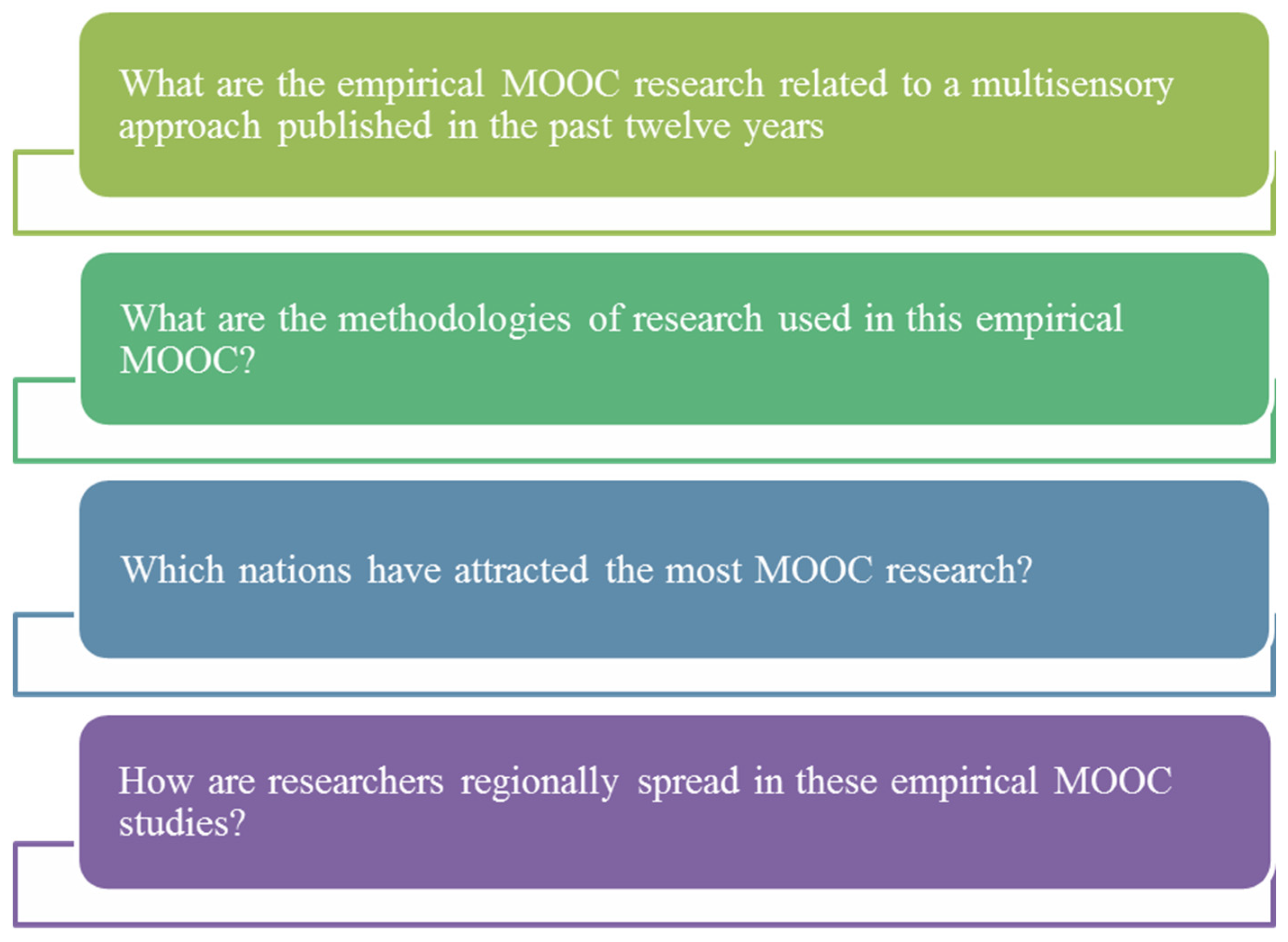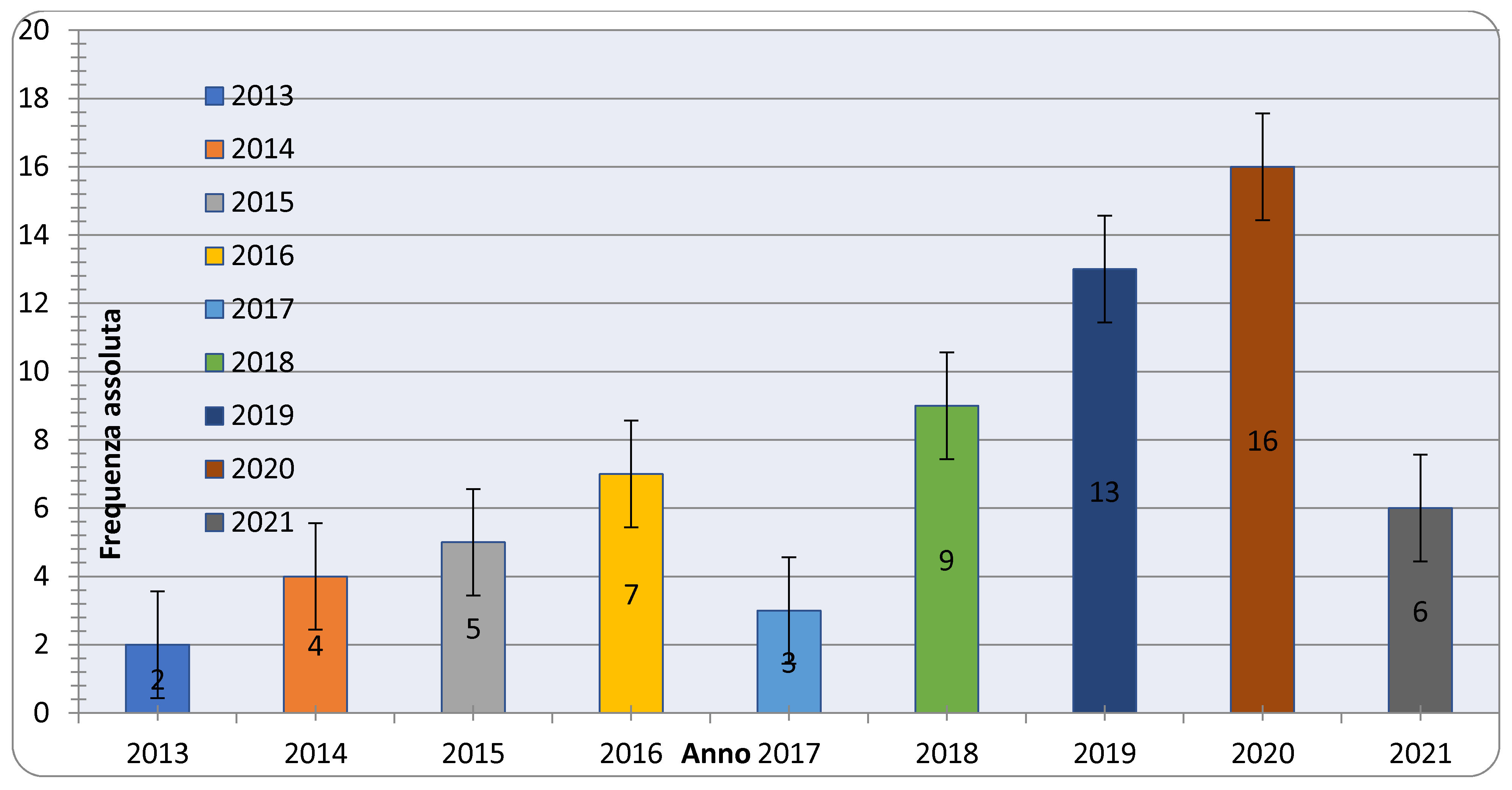
| Version | Summary | Created by | Modification | Content Size | Created at | Operation |
|---|---|---|---|---|---|---|
| 1 | Giusi Antonia Toto | -- | 1401 | 2022-04-08 17:34:35 | | | |
| 2 | Jason Zhu | -53 word(s) | 1348 | 2022-04-11 05:24:40 | | |
Video Upload Options
Massive Open Online Courses (MOOCs) have been described as a “next development of networked learning”, and they have the potential to mediate sensory learning. Most MOOC exploration, particularly on sensory learning, to date has zeroed in on student issues, for example, the student experience, social learning, commitment, self-controlled learning, inspiration, execution, and MOOC finish. Instead, research on MOOC teachers has a minor impact. To address this hole, MOOC specialists later on might target educators or plan more extensive investigations of different MOOC partners such as students, teachers, educational originators, or program heads. More examinations of MOOC teachers’ plan cycle and discernments would enhance the comprehension of MOOC wonder. Such exploration could advance a more profound comprehension of the nature of MOOCs, social affectability in MOOCs, MOOC instructional methods including course intuitiveness and commitment, and evaluation rehearsals from MOOC educators’ points of view.
1. Introduction

2. Distribution Diaries for MOOC Research

3. Multimodality in the Classroom
4. Area of Cognitive Styles
5. Future Perspectives
References
- Bali, M. MOOC Pedagogy Gleaning Good Practice from Existing MOOCs. MERLOT J. Online Learn. Teach. 2014, 10, 44–56. Available online: https://oerknowledgecloud.org/sites/oerknowledgecloud.org/files/bali_0314.pdf (accessed on 1 October 2021).
- Cachay-Huamán, L.; Ramírez-Hernández, D. Open, interdisciplinary and collaborative educational innovation to train in energy sustainability through MOOC: Perception of competency development. Int. J. Interact. Des. Manuf. (IJIDeM) 2019, 13, 1341–1352.
- Bulfin, S.; Pangrazio, L.; Selwyn, N. Making ‘MOOCs’: The construction of a new digital higher education within news media discourse. Int. Rev. Res. Open Distrib. Learn. 2014, 15, 290–304.
- Carver, L.; Harrison, L.M. MOOCs and Democratic Education. Lib. Educ. 2013, 99, 20. Available online: https://aacu.org/liberaleducation/2013/fall/carver-harrison (accessed on 1 October 2021).
- Dang, J.; Guo, J.; Wang, L.; Guo, F.; Shi, W.; Li, Y.; Guan, W. Construction of Z-scheme Fe3O4/BiOCl/BiOI heterojunction with superior recyclability for improved photocatalytic activity towards tetracycline degradation. J. Alloys Compd. 2022, 893, 162251.
- Chuang, I.; Ho, A.D. HarvardX and MITx: Four Years of Open Online Courses—Fall 2012–Summer 2016. 2016. Available online: https://papers.ssrn.com/sol3/papers.cfm?abstract_id=2889436 (accessed on 1 October 2021).
- Coffrin, C.; Corrin, L.; de Barba, P.; Kennedy, G. Visualizing patterns of student engagement and performance in MOOCs. In Proceedings of the Fourth International Conference on Learning Analytics and Knowledge—LAK′14, Indianapolis, IN, USA, 24–28 March 2014; Pistilli, M., Willis, J., Koch, D., Arnold, K., Teasley, S., Pardo, A., Eds.; ACM Press: New York, NY, USA, 2014; pp. 83–92.
- An, Y.; Zhu, M.; Bonk, C.J.; Lin, L. Exploring instructors’ perspectives, practices, and perceived support needs and barriers related to the gamification of MOOCs. J. Comput. High. Educ. 2021, 33, 64–84.
- Cooper, H. The structure of knowledge synthesis: A taxonomy of literature reviews. Knowl. Soc. 1988, 1, 104–126.
- Bozkurt, A.; Zawacki-Richter, O. Trends and Patterns in Distance Education (2014–2019): A Synthesis of Scholarly Publications and a Visualization of the Intellectual Landscape. Int. Rev. Res. Open Distrib. Learn. 2021, 22, 19–45.
- Jin, C. Dropout prediction model in MOOC based on clickstream data and student sample weight. Soft Comput. 2021, 25, 8971–8988.
- Stracke, C.M. The Quality of MOOCs: How to improve the design of open education and online courses for learners? In International Conference on Learning and Collaboration Technologies; Springer: Cham, Switzerland, 2017; pp. 285–293.
- Creswell, J.W.; Plano-Clark, V.L. Designing and Conducting Mixed Methods Research, 3rd ed.; Sage: Thousand Oaks, CA, USA, 2017.
- Alshehri, M.; Alamri, A.; Cristea, A.I.; Stewart, C.D. Towards Designing Profitable Courses: Predicting Student Purchasing Behaviour in MOOCs. Int. J. Artif. Intell. Educ. 2021, 31, 215–233.
- Doleck, T.; Lemay, D.J.; Brinton, C.G. Evaluating the efficiency of social learning networks: Perspectives for harnessing learning analytics to improve discussions. Comput. Educ. 2021, 164, 104–124.
- Adorno, D.P.; Pizzolato, N. Teacher professional development in the context of the “Open Discovery of STEM laboratories” project: Is the MOOC methodology suitable for teaching physics? J. Phys. Conf. Ser. 2021, 1512, 012030.
- Gnaedinger, A.; Gurden, H.; Gourévitch, B.; Martin, C. Multisensory learning between odor and sound enhances beta oscillations. Sci. Rep. 2019, 9, 11236.
- Scott, K.W.; Dushime, T.; Rusanganwa, V.; Woskie, L.; Attebery, C.; Binagwaho, A. Leveraging massive open online courses to expand quality of healthcare education to health practitioners in Rwanda. BMJ Open Qual. 2019, 8, e000532.
- Ebben, M.; Murphy, J.S. Unpacking MOOC scholarly discourse: A review of nascent MOOC scholarship. Learn. Media Technol. 2014, 39, 328–345.
- Hu, Y.; Spiro, R.J. Design for now, but with the future in mind: A “cognitive flexibility theory” perspective on online learning through the lens of MOOCs. Educ. Technol. Res. Dev. 2021, 69, 373–378.
- Hughes, G.; Dobbins, C. The utilization of data analysis techniques in predicting student performance in massive open online courses (MOOCs). Res. Pract. Technol. Enhanc. Learn. 2015, 10, 10.
- Simon, M.A.; Taylor, S.; Tom, L.S. Leveraging Digital Platforms to Scale Health Care Workforce Development: The Career 911 Massive Open Online Course. Prog. Community Health Partnersh. Res. Educ. Action 2019, 13, 123–130.
- Jiang, Z.; Wu, H.; Cheng, H.; Wang, W.; Xie, A.; Fitzgerald, S.R. Twelve tips for teaching medical students online under COVID-19. Med. Educ. Online 2021, 26, 1854066.
- Smith-Lickess, S.K.; Woodhead, T.; Burhouse, A.; Vasilakis, C. Study design and protocol for a comprehensive evaluation of a UK massive open online course (MOOC) on quality improvement in healthcare. BMJ Open 2019, 9, e031973.
- Kellogg, S. Online learning: How to make a MOOC. Nature 2013, 499, 369–371.
- Sneddon, J.; Barlow, G.; Bradley, S.; Brink, A.; Chandy, S.J.; Nathwani, D. Development and impact of a massive open online course (MOOC) for antimicrobial stewardship. J. Antimicrob. Chemother. 2018, 73, 1091–1097.




